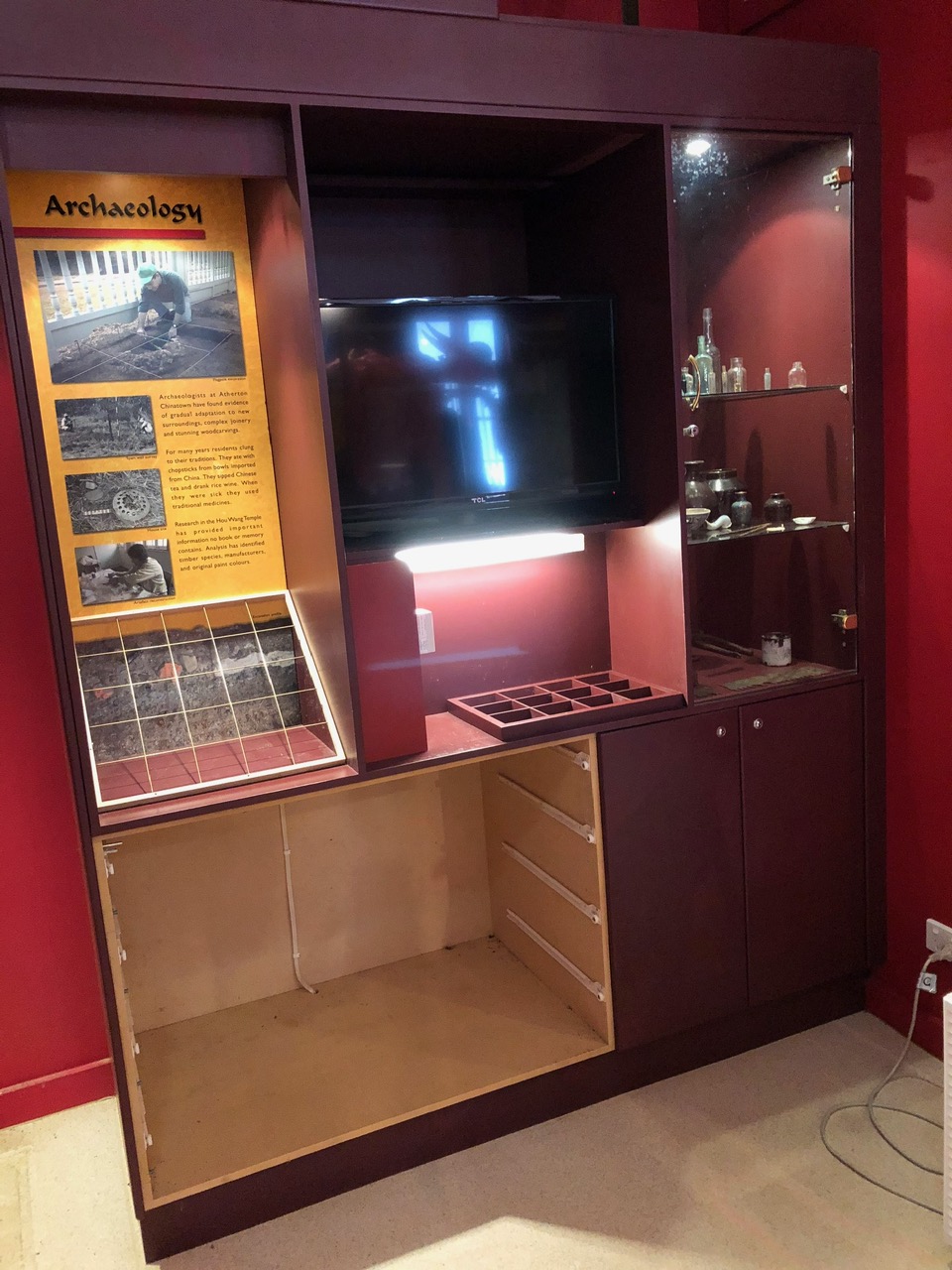Two new exhibitions at Gab Titui Cultural Centre, THURSDAY ISLAND
On June 17, Gab Titui Cultural Centre opened two new exhibitions to commemorate 150 Years of Coming of the Light. One explores the history and impact of Christianity on the community through an historic timeline. In the other, artists from three Torres Strait Art Centres have created works that represent truth telling: their understanding and response to this particular topic.
EXHIBITION PLANNING
MDOs Jo Wills and Ewen Mcphee worked with staff in March and then again in June to ensure the project was ready for opening. Exhibition training workshops in March included research, object analysis, interpretation and conservation, and ensured that new staff understood and contributed to the exhibition development process. There are multiple perspectives within the TSI community about what ‘Coming of the Light’ has meant, and continues to mean. By using the topic as the basis for the workshop, we were able to deliver applied training and help shape an exhibition plan.
Prior to the MDO workshops, lead curator, Leitha Assan, had already run engagement workshops with the three participating art centre communities (Erub Ewer Meta – Erub Arts; Moa Arts – Ngalmun Lagau Minaral Torres Strait Islander Corporation; Badu Art Centre | Torres Strait Islander Art from Badu Island). Her challenge was to bring all the components together and curate displays that creatively honored diverse viewpoints. Not an easy task, or in such a compressed time frame.
Between March and June, Gab Titui staff were busy with research, planning, community engagement, and content preparation. This included liaising with AIATIS, travelling to the islands to record interviews and collect items from the community for the displays. Staff also had to coordinate the transportation of artworks and production and printing of all material (labels, text panels, decals) back to Thursday Island – no mean feat when you’re living a remote community! MDOs assisted with ongoing advice and purchasing of materials and equipment.
Hands on installation training
When Ewen and Jo returned in June to assist with the installation, they were joined by freelance photographer and exhibition designer, Michael Marzik. Leitha was also keen for artists Jimmy K Thaiday (Erub), Fiona Mosby and Paula Savage (Moa) and Matilda Nona (Badu) to get some exhibition installation experience. With two large projects to install, it was all hands on deck, and wonderful to have additional people working across the two galleries.
Each artist bought their own skills, understanding of materials and expertise to the process, and oversaw the installation of their own works, their colleagues’ works as well as other exhibition components. It was all hands on deck for the installation of decal signage, mannequin dressing and one of the large charcoal pieces from Erub Island.
Opening night at Gab Titui
Exhibition openings at Gab Titui are a special, community event. This year was the first opening for a few years, and people from around the region, and state, were in attendance. This included QM’s Head of Cultures and Histories, Christopher Salter. Openings comprise a curated outdoor program of prayer, speaches, dance and song. After that, the galleries are opened to the community. This year, the Saibai Island Dancers performed took the stage, accompanied by a choir.


















































































































